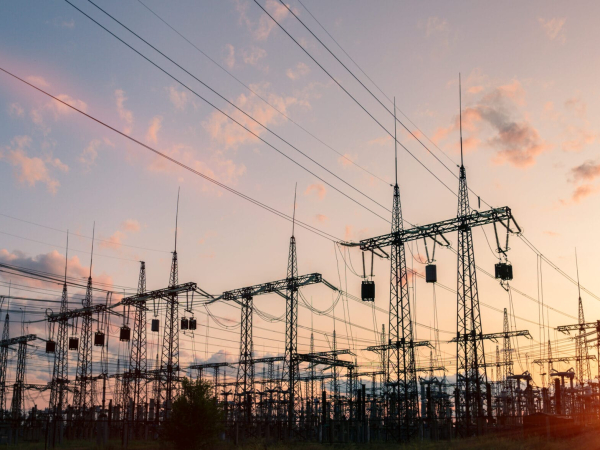Energy & UtilitiesOptimize Technology
Guarding the grid: Cybersecurity in solar and renewable energy
Instead of implementing static, one-size-fits-all solutions in an environment where threats are continuously evolving,…
Read article

Energy & Utilities Platform & Products
02/24/2022
by Reilee Berger

It is no secret that renewable energy has become one of the main focal points of the utilities industry. The US, along with the rest of the world, is investing in renewables as a way to reduce dependency on fossil fuels, combat climate change, and scale energy production and storage to meet ever growing energy demand. As a result, the US power grid is undergoing a period of transition and evolution.
Let’s examine the current trends in renewables and energy storage on both large and small scales, highlight distributed generation, and take a look at how these will impact the utility industry as the US is integrating renewable electricity on the grid.
Renewables
In 2020, the second highest electricity production source in the U.S. was renewable energy. This was a record year for renewables as they contributed a total 834 billion KWH of electricity. The image below shows the breakdown of US electricity sources since 1950.
The US Energy Information Administration (EIA) expects renewables to increase dramatically from 834 billion KWH produced in 2020 to almost 2,500 billion KHW in 2050. Electricity demand is also expected to increase; consequently, renewables would account for 42% of overall electricity production in 2050 and surpass natural gas as the largest producer by 2030. Of all renewable sources, solar is expected to make the biggest charge in growth. In fact, solar will account for almost 80% of the growth in renewable production. That growth is supported by several factors, including cost efficiency, paired storage capabilities, and distributed generation via home solar panels.
Energy storage
Energy storage facilities have been utilized worldwide for decades. As of 2021, the United States has approximately 29 GW of energy storage capacity out of a total 1,200 GW of power generation capacity. The majority (92%) of that storage capacity has been through pumped hydroelectric storage (PHS). PHS is a reliable storage method that will continue to have a place in our grid. However, there are efficiency drawbacks which have limited further investment.
Currently, the most promising storage method in the industry is lithium-ion battery technology. Of the energy storage projects currently underway in 2021, 64% of them are battery projects. This is due to their near 100% efficiency, high energy density, and abundant US lithium reserves. One of the main drawbacks of lithium-ion batteries historically has been their cost, which has kept them from being a scalable solution. However, research in this area driven both by utility and transportation use has brought the cost per KWH down by a staggering 97% since 1991. The cost and capacity of lithium-ion batteries are expected to continue to improve, further justifying investment in this area.
Home solar / Storage
Renewables have made their way outside of utilities into homes and businesses. Solar installations in particular have become common and even mandatory in certain new developments in California. Federal and state incentives and rebate programs are available to attract homeowners towards installing solar panels in their residences. Since 2015, total US residential and commercial solar capacity (excluding utilities) has increased from 11,900 MW to over 40,000 MW, and this trend is expected to continue. Additionally, residential battery storage has become possible thanks to products such as the Tesla Powerwall. By 2025, it is projected that 25% of residential and commercial solar systems will be accompanied by battery storage.
Net metering
As of 2021, 41 states currently have a regulated program called net metering. Net metering provides a retail rate credit for contributions back to the grid for homes and businesses equipped with solar panels or other distributed generation. Policies vary by state and utility, but in some cases homeowners can actually be paid during months when their energy production is net positive. In states where net metering is not regulated such as Texas, certain utilities still voluntarily offer similar incentives.
Co-operatives and solar communities
Co-operatives became part of the energy landscape during FDR’s presidency and aimed to provide electricity to rural America. Today these co-operatives have grown in scale and exist en masse across all fifty states. However, the idea of a co-operative becomes increasingly interesting as distributed generation and storage grows. A single individual has no means to sell electricity on the open market. Collectively, however, individual owners of distributed generation capacity can look to form co-operatives and receive compensation for their contribution. There are a variety of ways in which an individual can take part, e.g., establishing a membership of a renewables focused co-op that compensates members for their home generation.
Another model that has grown in popularity is called a solar community. Solar community projects are investor owned large scale solar projects that differ from traditional distributed generation because they only require financial investment. They benefit individuals who either cannot support a home solar system or want to make additional offsite investments. Investors receive a monthly check for energy which is produced by the project and sold in the wholesale market. As of 2020, there were over 1,200 active solar communities across 43 states, and this number continues to grow.
Implement technologies to enable net metering
In states like Texas with deregulated utilities and competitive markets, focusing on renewables can help to acquire new customers. Net metering or similar programs are important to homeowners and businesses who are investing in solar because they will want to see reduced energy bills as well as data on their electricity production and consumption. To achieve this, technology that supports net metering can be implemented as follows:
Invest in renewable and storage infrastructure
As the industry moves towards renewables, utilities are making major investments in infrastructure in order to provide renewable energy. One incentive that will appeal to utilities is that the cost to produce renewable energy is now equivalent to or less than non-renewable sources. Technological advancement has caused significant price decreases across the board for solar, wind, and battery technology; this has decreased the cost to both build and operate these projects. Even traditionally inexpensive coal plants are now more costly to operate per MW than renewables on average. Utilities making large upfront investments will reap major benefits in the future as they are able to produce clean energy cheaply, which is attractive to customers, investors, and shareholders.
In addition to building infrastructure for their own use, utilities can look to profit from state and local government contracts to build infrastructure. Recent severe weather patterns and winter storms in Texas have illustrated the immediate need for storage to supplement the grid. Utilities have the resources, scale, and expertise to build storage and renewable facilities that can be sold as a whole or as operational partnerships.
Stay ahead of regulations
Utilities should be aware of federal or state regulations which would force them to make changes with regards to renewables. The largest of these regulations would be a federal Renewable Energy Standard (RES) policy which has not been passed by Congress but could be on the horizon. Knowing that increased investments in renewables are coming, utilities should be making plans to prioritize renewable projects in their strategic plans for the future.
Want to learn more about how your organization can stay ahead of these trends? Send us a message using the “Contact Us” form linked at the top of this page and a consultant from Sendero will reach out to you.
Business insights
Energy & UtilitiesOptimize Technology
Instead of implementing static, one-size-fits-all solutions in an environment where threats are continuously evolving,…
Read article

Energy & Utilities
With ERCOT’s Real-Time Co-optimization plus Batteries initiative, a shift in how energy and ancillary services are…
Read article

Energy & UtilitiesOptimize Technology
New rules aimed at reducing emissions, enhancing grid reliability, and protecting consumer data are being introduced at…
Read article
